I had the pleasure of visiting Amsterdam, capital of the Netherlands, during my European trip this summer. This was my first time in the Netherlands, and within a few days the Netherlands became one of my favorite countries in Europe. The Netherlands is a highly civilized country, with modern and well-maintained infrastructure, a very safe society, clean streets, beautiful architecture, modern easy-to-use public transportation, and well-mannered and straightforward people. As a straightforward person myself, it is refreshing to interact with many of the Dutch locals because of the straightforwardness in their communication style. Directions are rarely confusing, and I could easily figure out how to use public transportation or learn about interesting facts on Amsterdam by asking one of the locals.
Of course, Amsterdam is world famous for its red light district and legal marijuana smoking, and many of the tourists who come here come for those two reasons. The city center of Amsterdam is the red light district itself, also known as De Wallen. De Wallen, originally the medieval city center, hosts many of Holland’s oldest churches and buildings, including the headquarters of the now defunct Dutch East India Company, responsible for much of the Dutch colonization efforts in the past. All this history sits side by side with brothels, red-light window shops for prostitutes, and “coffee” shops selling marijuana and other drugs. Throughout the day and night De Wallen is filled with smells of cannabis from tourists smoking in the open air. Although prostitutes solicit from their windows throughout the day, many window shops are closed until nighttime. By the time the sun sets, the red-light district gets very crowded, and almost all the window shops are open for business.
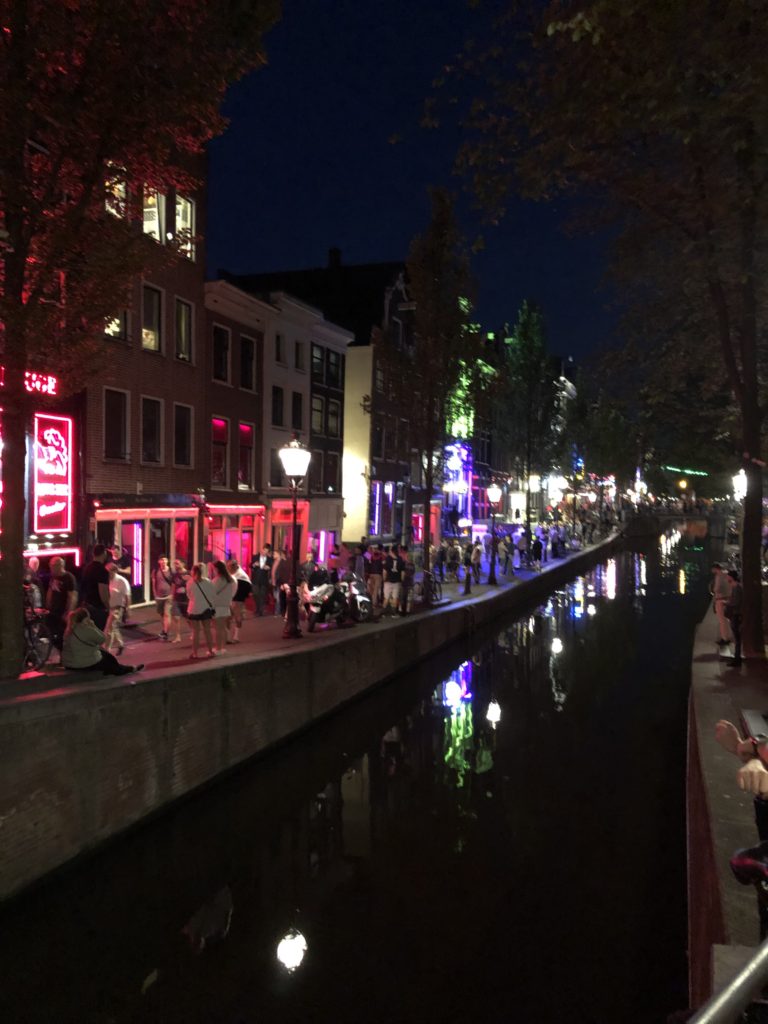
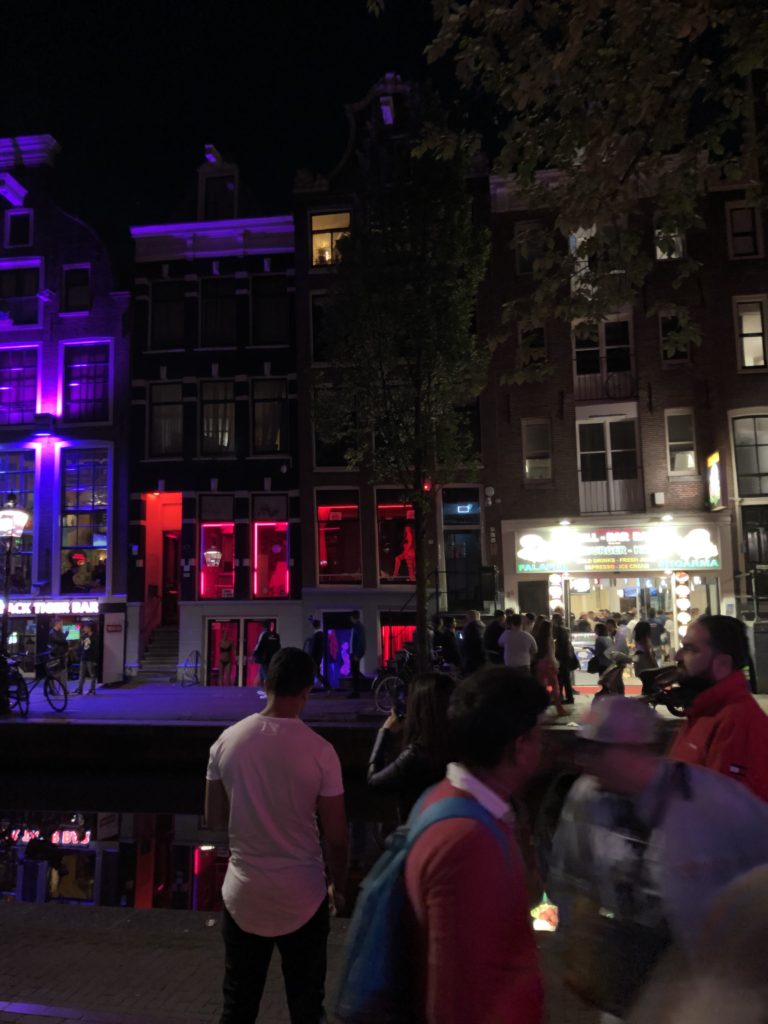


Above: Amsterdam’s red light district at night
Taking photos in the red light district (especially with the window girls) is forbidden in Amsterdam, so if you want to take pictures you have to be discreet. The above images were some quick snaps I made while on my phone.
But there is a lot more to Amsterdam besides the red light district and legalized weed smoking. The city is crisscrossed with canals and transportation by ferry is common. Ferry rides in Amsterdam are free, making it a popular method of transportation. Moreover, the ferry rides often pass by many of Amsterdam’s prominent sites, making it an easy way to go sightseeing. Don’t be mistaken though. Although the ferry rides through Amsterdam’s major waterways, especially the IJ, are free, the boat rides in the smaller canals throughout the city are not free.


Above: Some sightings from the Amsterdam ferry

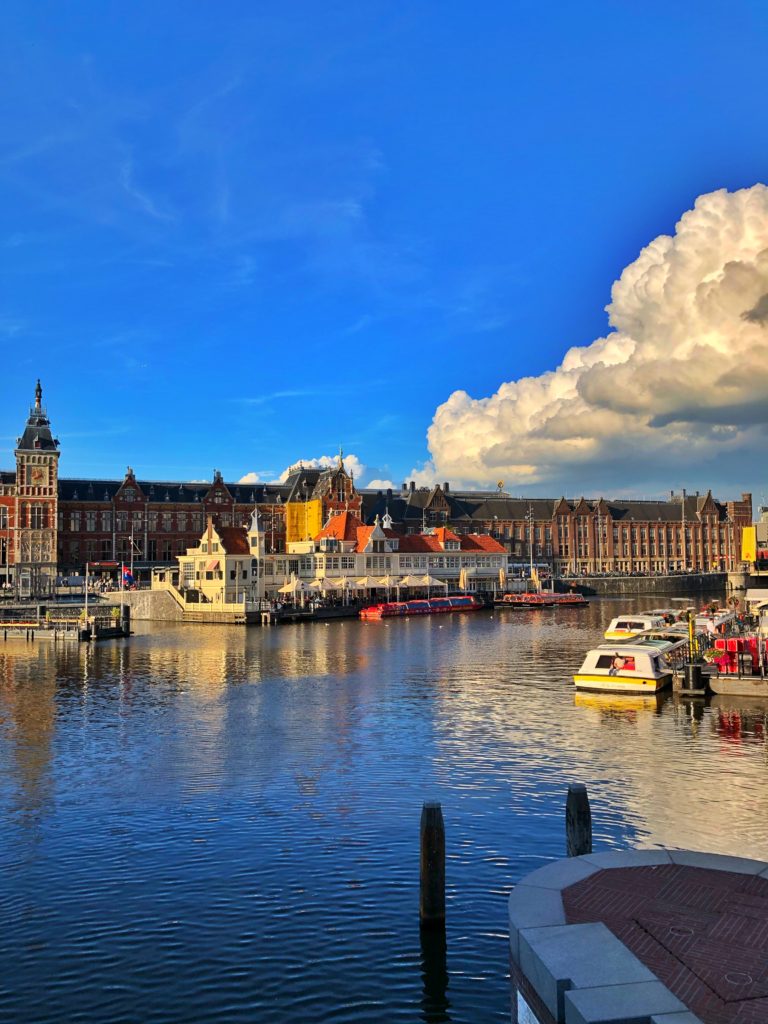
Above: Views at the canal in Amsterdam Centraal (that is not a typo, it’s Dutch)
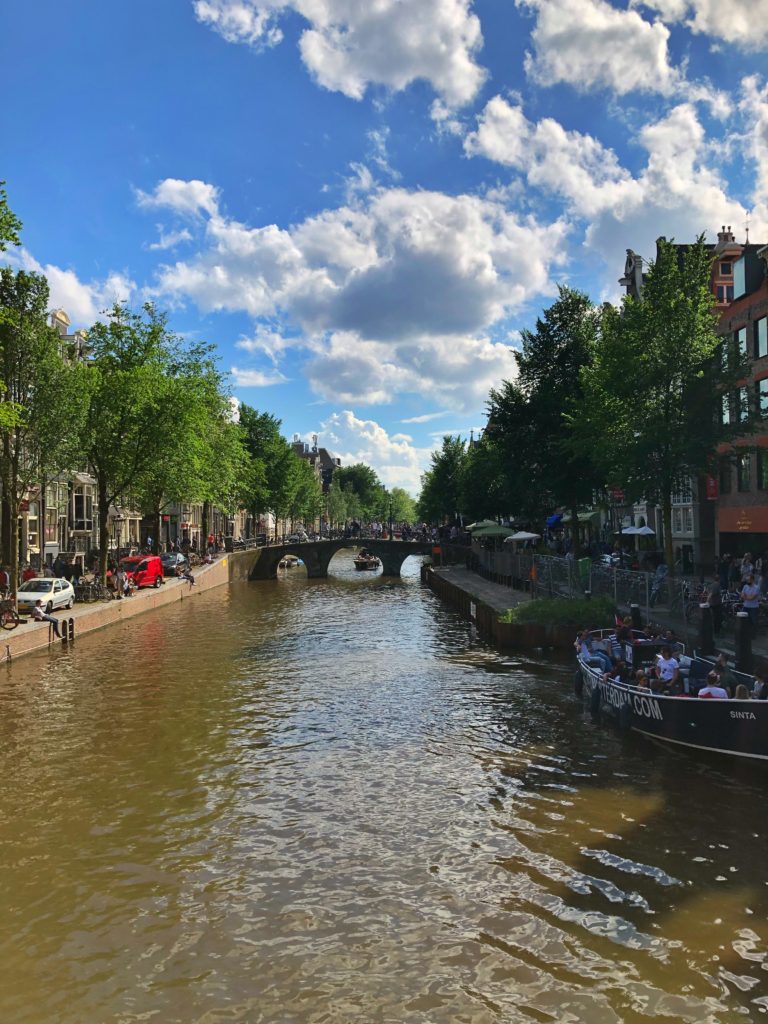
Above: An Amsterdam canal
Though travel by boat is common in Amsterdam, the most popular way people get around is by bicycle. There is no other city I’ve been in with such a high proportion of people using bicycles. Even next to the ferry stations there are large bicycle parks where people lock their bicycles, not so dissimilar to the car parks you find in America.

Above: Dutch people on bicycles
The city is also full of great architecture and quaint narrow buildings. The reason why the Dutch built their buildings so tall and narrow (tall by historical standards) is because in the past the Dutch were taxed for how wide their buildings were. However, in the main streets and plazas, one can find much grander examples of Dutch architecture.

Above: The plaza in Amsterdam
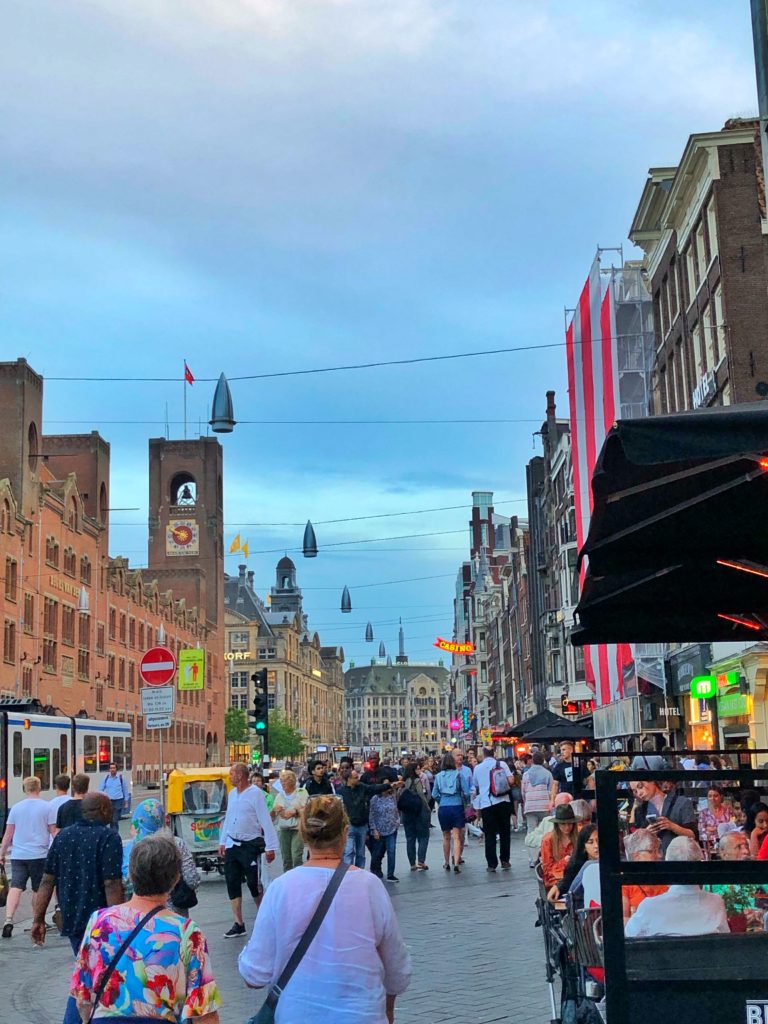
Above: One of Amsterdam’s main streets
Although the Dutch aren’t famous for their food, I was pleasantly surprised how good the food was. Unlike in France, where I was previously, the food portions are bigger and more filling. There’s a plethora of meat options to satisfy my meat cravings, from schnitzels to livers to ribs to Spanish ham or even just a nice cut of steak. I could get a good portion of one of my favorite meats, the Jamon Iberico de Bellota, for less than 20 Euros, whereas in America a pound would cost well over $200 and an equivalent portion would at least be $50. The sweet oily and yet salty taste of the Jamon Iberico comes from the acorn-fed black Iberian pigs of Spain, the premium pigs for the pork market. Because of the rarity of this specific breed of pigs, the good conditions they were raised in, the acorn diet, and the multiple-year process to cure the ham, the Jamon Iberico de Bellota is one of the most expensive hams you can get, and it was great to get them at such low prices in the restaurants in Amsterdam. It may be even cheaper in Spain, where it is produced, and that could be motivation for me to visit Spain some other time.

Above: Jamon Iberico de Bellota

Above: Dutch meal portions
Another notable aspect of Dutch dining is that Dutch restaurants don’t serve tap water, so ordering a beer is often cheaper than ordering water. If you want to save money while dining out in Amsterdam order beer. I once asked for tap water at a Dutch restaurant and was given still water, and I had to talk to the manager to remove it off my bill because even though I drank it, I didn’t order the still water and was mislead that it was tap water. Beer is simply the safe (and cheapest) option in Dutch restaurants.
Although the Dutch locals were pretty nice in general, the customer service in Dutch restaurants was generally pretty bad. Customers are expected to take a seat themselves and often have to wait a long time before a waiter or waitress notices them and gives them a menu. I usually made an effort to get the server’s attention so that I could get the menu and not waste time, and by that I mean I would get up from my table and walk up to a server to get the menu. Other customers (especially tourists) would often wait a long time before even getting a menu, because waving your hand at the servers often doesn’t work in Amsterdam. There were two Americans at a table next to me one time that waited over 20 minutes before getting up to walk to the servers to get a menu. Servers tended to be young and would often spend more time talking to each other and on their phones than paying attention to the customers. I noticed other tourists getting annoyed by this behavior as well, but the Dutch locals didn’t mind and would lounge at their tables smoking cigarettes and enjoying a good conversation. Perhaps it is just Dutch culture to give people more space and time to enjoy their meals, and from what I’ve observed the Dutch locals seem to take their time while eating at a restaurant. There’s a relaxed cozy atmosphere while dining out, and the good part of Dutch customer service is they never rush you to pay for the cheque.
I very much enjoyed my stay in Amsterdam. The city has become one of my favorites and I wish I had time to do more. Perhaps another time I will.
